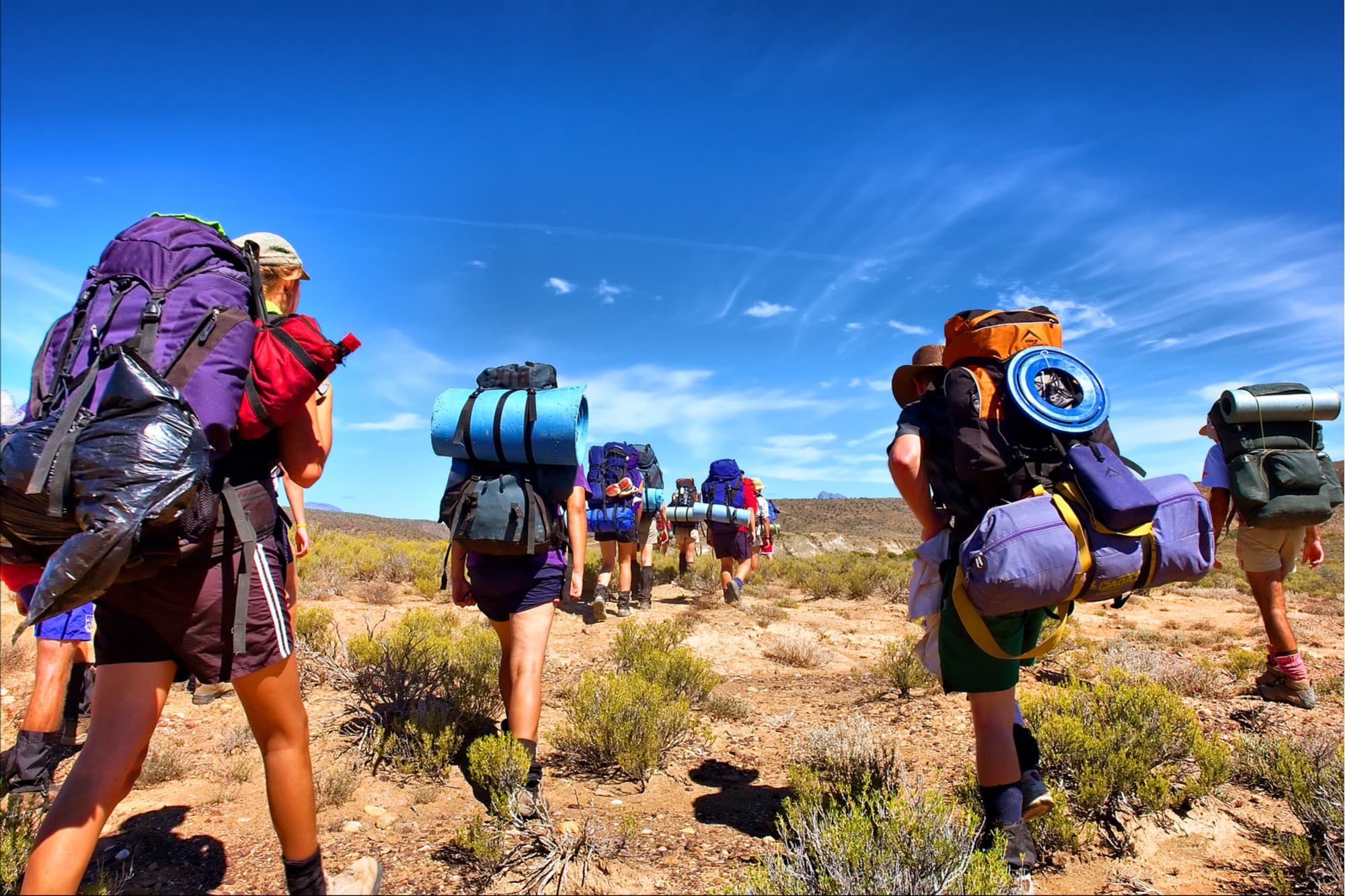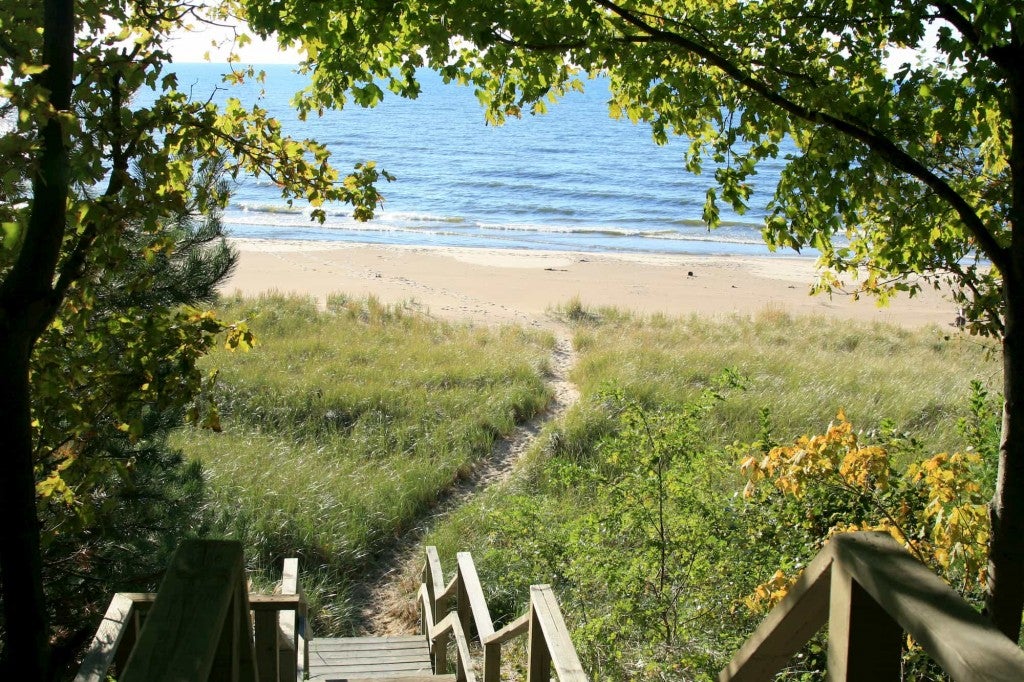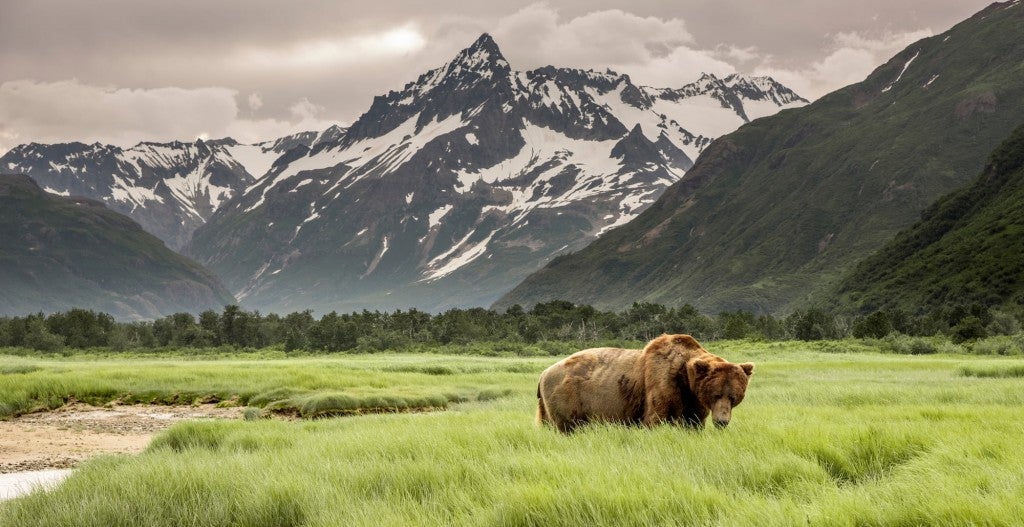It’s early Spring, which means it’s the beginning of thru-hiking season. To prepare for the hiking season and brush up on my knowledge, I attended the American Long Distance Hiking Association – West Annual Ruck. The ALDHA hosts “rucks” across the country every year, helping backpackers prepare and get stoked for the upcoming thru-hiking season with backpacking tips, presentations, gear recommendations, and more. Ruck is German for backpacking, and the term is used throughout the hiking community as an event that helps you get out into the wilderness.
The Ruck was an all-day educational event. Break-out sessions covered everything from specific thru-hikes to financing your hike to women-specific advice to how to become an ultra-lightweight backpacker. I consider myself an experienced hiker and backpacker. But I learned that I still have a lot to learn.
20 Surprising Backpacking Tips from the 2019 ALDHA-West Ruck

While I learned a lot of tricks and tips for backpacking, I think I learned the most about going to the bathroom in the great outdoors!
1. Keep your bladder trained while on trail. Being able to relieve yourself as soon as nature calls is one of the liberating joys of the wilderness. However, I learned that can lead to some sticky situations when you return to society and can’t relieve yourself instantly. To avoid public embarrassment and maintain a trained bladder, when you feel the urge, don’t just go, instead hold it for a few minutes before going.
2. Ladies – practice peeing in the shower! Wait, what!? Standing to pee isn’t just for the guys anymore with the influx of stand-to-pee devices for women. However, this is a new skill for us ladies, and we need to practice. To avoid a mess on the trail, you can master this skill by practicing with your peeing device in the shower.
3. Doggy poo bags are great for your used toilet paper. If you’re familiar with the outdoors and Leave No Trace principles, then chances are you’ve heard “pack it in, pack it out.” This most certainly applies to your used TP as well. Using lightweight compact dog waste bags to handle your used TP will help keep your hands, your pack, and Mother Nature clean.
4. Even better, ditch the toilet paper altogether. Don’t worry about the hassle of toilet paper with pee cloth or a bidet attachment for your water bottle. It’s easier to follow LNT principles when you don’t bother with the toilet paper.
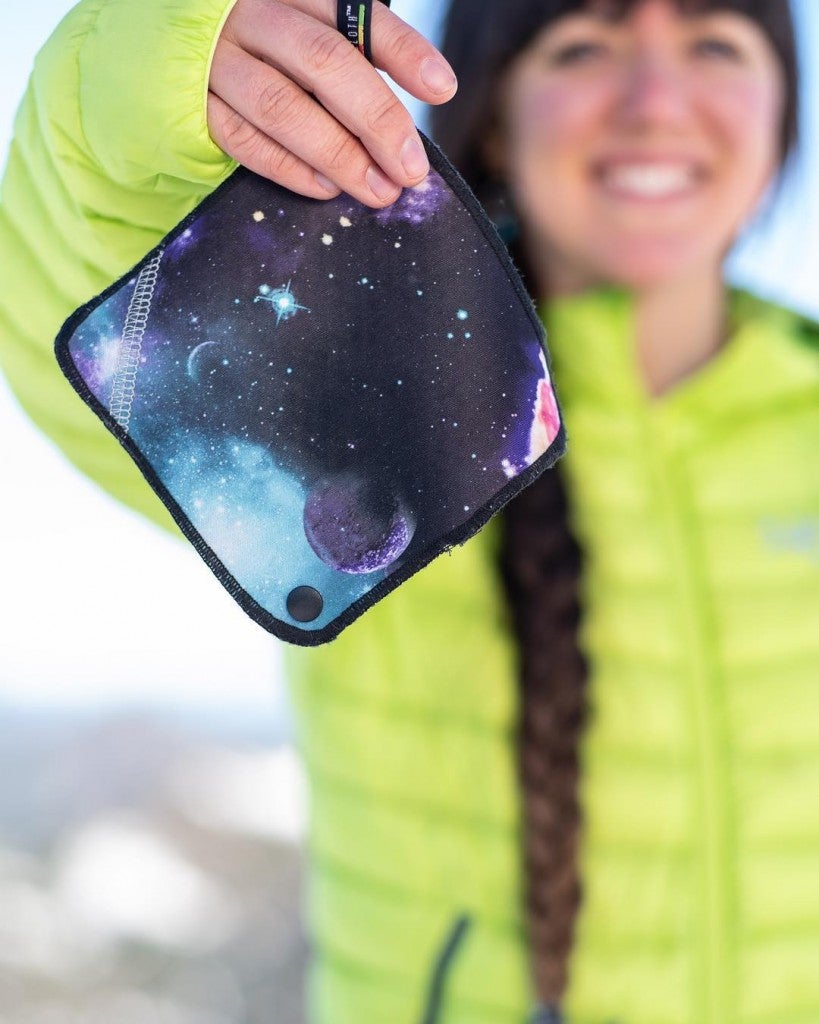
Image from Kula Cloth
5. Deodorize with aspirin. Put a crushed up aspirin in your garbage or wag bag to help with odors.
6. Micro Spikes aren’t just for snow and ice. They are also great for crossing slick wet logs on river crossings.
7. Never leave home without your umbrella. For rain or sun protection, thru-hikers almost universally agree that a hiking umbrella is a surprisingly necessary piece of gear on the trail.
8. Give yourself some extra padding with your socks. Use your extra pair of socks for additional padding on your shoulder straps and hip belt.
9. Ask the hotel if they have “hiker towels.” Hikers, backpackers, and campers are dirty creatures even after they shower. Hotels in thru-hiking towns often have designated “hiker towels” which are usually not white—or at least not anymore.
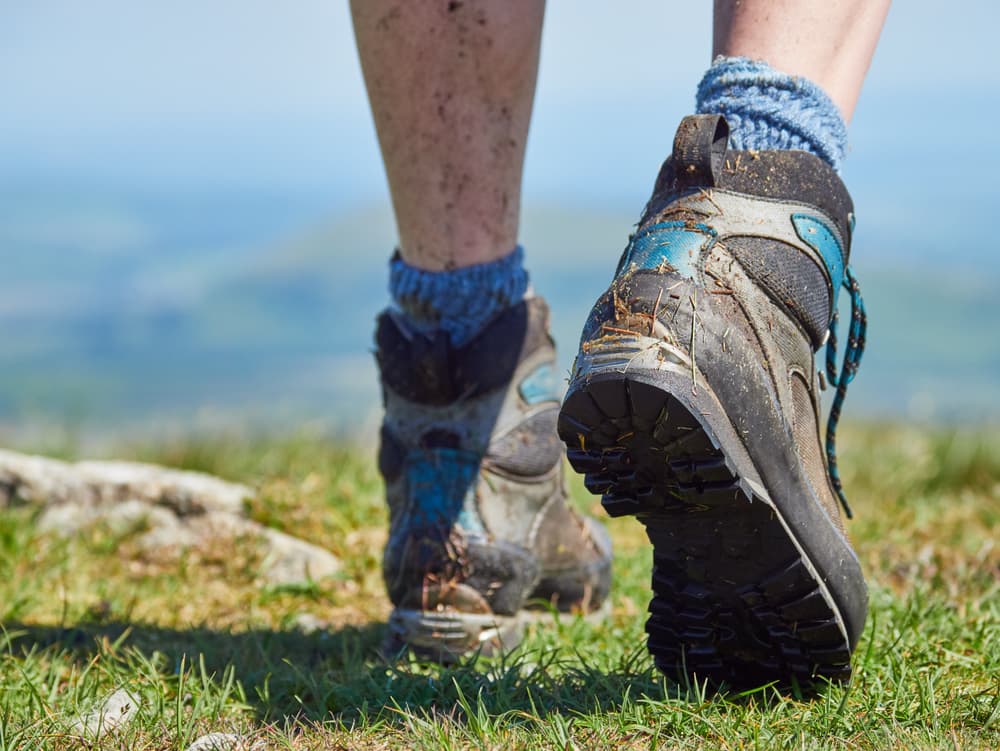
10. Check your insurance coverage. Some insurance companies have altitude restrictions – if you’re going to be backpacking at elevation, then check your coverage before you go.
11. Check left behind hiker boxes. When embarking on a thru-hike, it’s often necessary to mail yourself resupply boxes. Many hikers are overly optimistic about their nutrition on the trail; they plan on eating healthy, but end up surrendering to quick junk food snacks. Hiker boxes can be a great source of FREE and HEALTHY food that’s been left behind by other hikers because everyone opted to grab the chips and Poptarts instead.
12. River crossings are one of the biggest dangers to thru-hikers. This one surprised me. I assumed falling, weather, exposure, and getting lost were the real dangers, but I was totally unaware of the extent of risk that river and stream crossings present. When trying to cross safely there are a variety of factors to consider when water levels change daily and even hourly.
13. River levels are lower in the morning. Typically, mountain stream and river levels are lower in the morning after the melting runoff refroze overnight.
14. Buy bigger snowshoes. Don’t count on your snowshoes holding you up once you’re wearing a full pack. Post-holing is never fun especially if you’re doing it with snowshoes and a full pack. If you’re taking snowshoes on your backpacking trip, make sure they are big enough to support you and your pack.
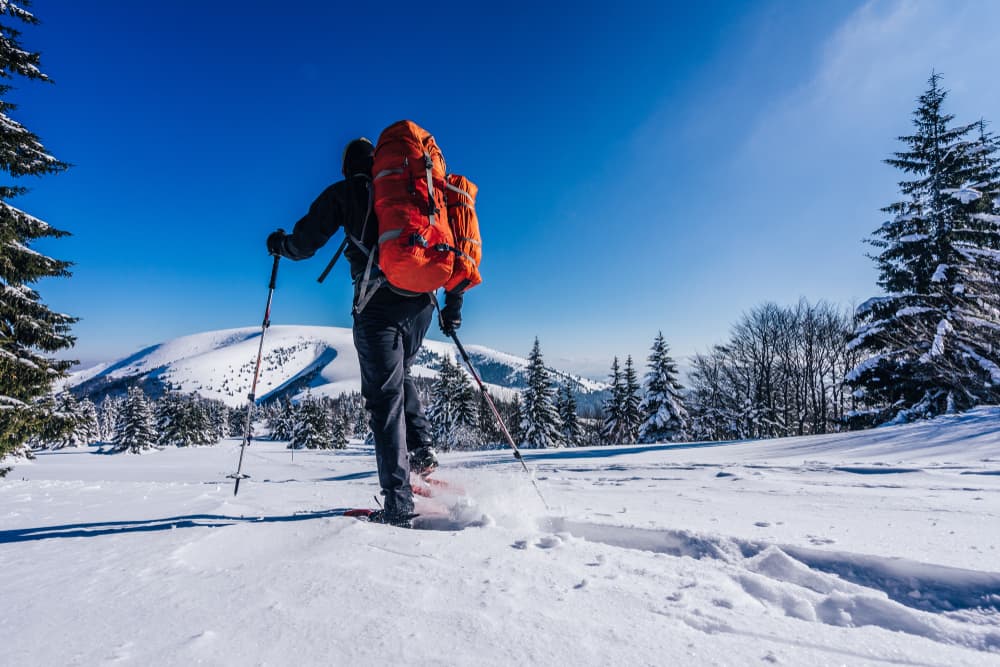
15. Have your medical ID on your phone. All iPhones have a built-in place to keep a digital copy of your medical ID that can be accessed without unlocking the phone. Android users can download Medical ID: In Case of Emergency.
16. Carry a sharpie. If you get bit by a tick or spider, you can draw a circle around the bite and date it. This is an easy way to monitor if there is an infection.
17. Remember the lightning-safe position. Ideally, you will see the storm coming and find cover. However, if you find yourself exposed above the treeline, then ditch your metal-frame pack and trekking poles and get into the lightning safe position.
To get into the lightning-safe position, crotch down like a baseball catcher getting as low as you can, cover your ears with your hands, and lift your heels touching them together – only the balls of your feet should be touching the ground. In the event of the ground near you being struck, if you’re touching your heels together, the lightning is more likely to go in one foot and out the other opposed to passing through your entire body.
The idea is to make yourself as small as possible, reduce your contact with the ground, and provide a safe path for the electricity should you or the ground be struck.
18. Have an exit excuse ready. This is less of a backpacking tip, and more of a safety tip. If you are nervous about trail encounters and group sites, have an easy ‘opt-out’ excuse ready. Once you get to the camp shelter or picked up while hitchhiking, feel out the situation. If you feel uncomfortable, then say something like “oh crap, I forgot my camera back on that rock when I stopped to take a picture,” then simply leave.
19. Get a person in the car before you toss in packs. If hitchhiking, don’t throw your packs in until at least one person in your party has gotten into the vehicle because, unfortunately, there are bad people out there who use good acts to trick people.
20. Sorry, but you are not special just because you walked there. While thru-hiking and long-distance hiking in general are impressive, you are not entitled to special treatment just because you walked there. Thru-hikers like all other outdoor enthusiasts should respect the rules and LNT principles.
If you’re interested in learning more backpacking tips, then make sure to check future ALDHA events and Rucks that may be in your area.
The Dyrt is the only camping app with all of the public and private campgrounds, RV parks, and free camping locations in the United States. Download now for iOS and Android.Popular Articles:
Articles on The Dyrt Magazine may contain links to affiliate websites. The Dyrt receives an affiliate commission for any purchases made by using such links at no additional cost to you the consumer.

